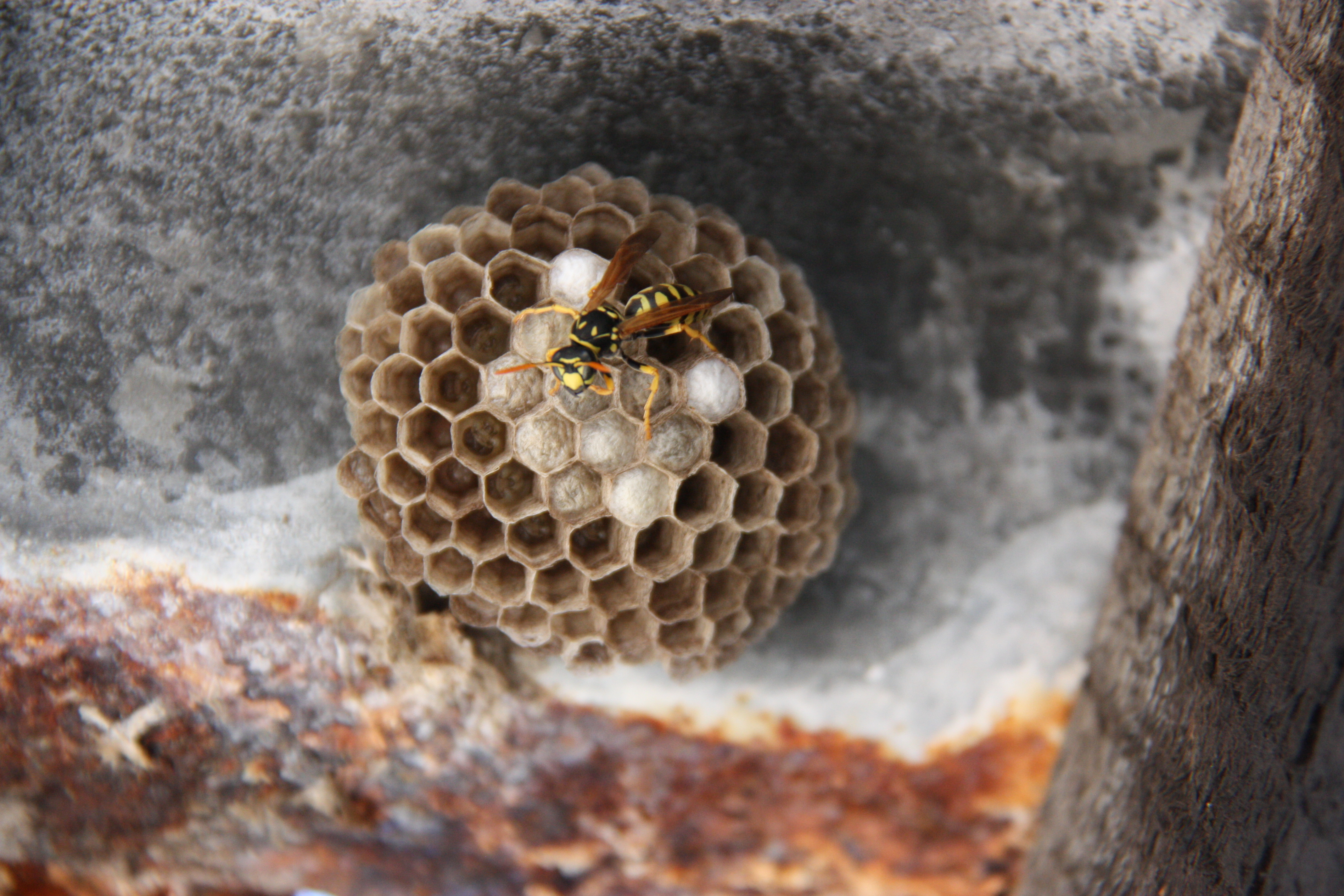To be stung forty times in four years by wasps is much more than most people would be able to endure. That's however what happened to Carolien van Zyl while she was doing research for her doctorate in entomology about two types of invasive wasps that have made the Western Cape their new home. To do so, she had to remove more than 200 wasp nests. In the process she established that there might be indigenous biocontrol measures that can be used as an alternative, or concomitant, to chemicals to stop the spread of these invasive insects.

The paper wasp (Polistes dominula). Photo: Supplied
Van Zyl will receive her PhD degree on 8 December at the graduation ceremony of Stellenbosch University's Faculty of AgriSciences. Her supervisor was Dr Ruan Veldtman of Stellenbosch University and the South African National Biodiversity Institute. He is among those involved in studying the spread and control of the German or European wasp (Vespula germanica), and the paper wasp (Polistes dominula) in and around the Cape Floristic Region.
These insects have become an all too familiar sight in many parts of the Western Cape, including Cape Town and the Boland towns of Stellenbosch, Wellington and Franschhoek.
"The wasps have been known to keep farmers from harvesting their crops, to gate crash birthday parties, spoil picnics and even attack dogs," says van Zyl.
The black and yellow striped insects have a taste for protein and sugar. Some call them "the annoying relative of the insect world". The German wasp has been in South Africa since 1974, while the paper wasp was first recorded on local shores in 2008.
Native to Europe, North Africa and Asia, both are widespread pests. "In invaded parts of the world, they are known to cause damage to the bee-keeping industry, horticulture, tourism, and biodiversity," says van Zyl.
Control efforts
"It is important to reduce population densities during the wasp season and prevent further spread beyond the perimeters of the current distribution area," she adds.
Chemicals are not the only (or always most effective) method by which to control insects. Researchers such as van Zyl and colleagues from Stellenbosch University's Department of Conservation Ecology and Entomology are therefore investigating the possible use of different types of biological agents, such as their natural parasites and predators or fungi that can infect the insects.
It is hoped to include pathogens, predators and parasites into an integrated pest management (IPM) programme to tackle the wasp issue.
Through her PhD work Van Zyl established that two live biocontrol agents – one a fungi and the other a microscopically small roundworm called a nematode – can be used to kill the invasive wasp species. The precise formulations that would contain these biocontrol agents still need to be determined before it can be successfully used in the field.
"Now that we know that there are live organisms presumably indigenous to South Africa that can be used to control the wasps, a platform has been created for future research to investigate how well these agents will work outside of the laboratory, before being released into the wild," she adds.
Looking for tell-tale signs
Van Zyl collected live wasp nests during the summer of 2013 and took them back to the laboratory at Stellenbosch University. There the larvae in the nests were covered in various solutions of nematodes and fungi and dissected a few days later.
"If the live wasp larvae showed distinctive signs of infection, it meant that the fungi and nematode application worked. The agents were able to enter the insect bodies, release toxins, drain it of nutrients and eventually kill it," van Zyl explained the tell-tale signs she was looking for.
Both wasp species were highly susceptible to the agents tested.
"The wasp larvae died within two days after being treated with nematodes," van Zyl remembers. "When they were dissected, they were found to be filled with hundreds of microscopic-sized nematodes that were busy consuming the larvae from the inside out."
The wasp larvae also met their match against the fungi application. Normally wasp larvae are milky-coloured. "Larvae from the nests infected with fungi turned pale-pink, while fungal filaments grew out of the dead larvae like snow-covered sprouts," she remembers.
Upon graduation, Van Zyl will now be job-hunting for something where time can ideally be spent split between working outdoors and in an office, and where she can contributed to the management of pests that attack agricultural crops in South Africa or elsewhere.
Additional information:
- Visit www.edrr.co.za to report sightings of the invasive wasps, or to identify the species you have seen.

